18 smart tips on how to promote your YouTube Channel
How to promote your YouTube channel
1. Optimize your YouTube content so that it ranks in search engines
Search engine optimization (SEO) is important for your YouTube profile, channel, and individual videos. This is what will make your content discoverable in search rankings.
YouTube’s algorithm takes multiple items into account when pulling videos for search results, so include as much information as possible. Know what keywords you want to rank for and include them in video titles, file names, descriptions, tags, annotations, and relevant fields in your profile.
Not sure what keywords you want to rank for? Reverse engineer the search process. If someone wanted what your YouTube videos offers—what words or phrases would they use in a Google search to find them?
Here’s how we did it:
- We included the keyword in the title, meta description, and image file
- The video description includes other keywords related to using the Hootsuite dashboard
- We linked to the video on our blog and social channels
- We always encourage people to subscribe to our channel and those subscribers were notified when the video was uploading—which meant instant views
- We created keyword-rich playlists, which gave YouTube deeper information about our video’s topic and, as the platform says, “More text-based content equals more views”
2. Create great video titles
This is likely the first thing someone will see wherever they find your video. The title must be informative and attention-grabbing. Here are some best practices you should consider when toying around with options:
- Keep it simple. You may be inclined to include every piece of info on your video, but great titles are short and to the point. Google truncates page titles at 66 characters, so anything beyond that is cut off in search results.
- Do keyword research. Use a tool like Google Adwords Keyword Planner to nail down one or two relevant keyword phrases to include in your title. This will help your video rank higher in search results.
- Tell the would-be viewer why they should watch. Like a headline on a blog post, your title is a promise to the viewer. You’re telling them how they will benefit by taking the time to view your content.
Here is an example of both a good and not so good video title:
- Not so good: Super Cool Tutorial for Makeup To Get You Ready For The New Tim Burton Movie
- Good: Tim Burton Look: Makeup Tutorial Video
3. Create clear and compelling YouTube thumbnails
These tiny images are a preview of the video—appearing as the default image wherever it is embedded.
Make sure the thumbnail is as large and clear (high quality) as possible. It must also accurately represent the video’s content and should be easily tied back to your brand.

Of course the most important thing is that the image is attention-grabbing and compelling. Some of the most effective thumbnails include:
- Close-ups of faces
- Text overlays
- Brightly colored backgrounds
- Tasteful branding (a small logo or watermark in the corner of the image)
- Contrast and outlines (around people or objects)

While YouTube will automatically generate image previews options when you upload a video, your best bet is to create a custom thumbnail. For those unfamiliar with uploading thumbnails, here are some specs to help you make sure you upload the best thumbnail for your video:
- Have a resolution of 1280×720 (with a minimum width of 640 pixels)
- Upload image formats such as .JPG, .GIF, .BMP, or .PNG
- Remain under the 2MB limit
- Try to use a 16:9 aspect ratio as it’s the most used in YouTube players and previews
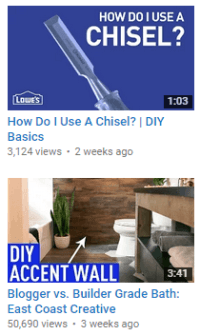
4. Fill out as much information on your YouTube profile as possible
Here are a few tips for creating a compelling profile that will help draw in viewers and subscribers.
Keep it consistent
While you can only do so much to customize the look of your YouTube profile page, ensure that your brand elements—colors, backgrounds, logo, icons, and layouts—are as consistent as possible across your social channels and website.
Optimize your YouTube channel description
Again, both your YouTube channel and individual video titles should be descriptive and optimized for search. Conduct keyword research to help your page improve its chances of ranking.
This is also the section where you can sell yourself. What problem does your channel solve for your audience? What need do you meet? Whether you’re teaching, entertaining, or showing them something they’ve never seen, spell it out for potential viewers.
Also use this space to establish your schedule. When and how often will you publish new videos? Let your viewers know so they can come back for more—and stick to your own schedule.
Include Contact Links
It’s great that folks are viewing your videos—but they may want to contact you in other ways. Make it easy for them to send you feedback, ask questions, or make queries about your products. Link back to your website as well as other social media channels, and include a contact email.

5. Take advantage of email marketing
Publishing great videos is certainly a solid first step—but you have to make sure your audience knows when you post new content. And what better way to deliver updates than through your followers’ inboxes?
Email is still one of the top channels marketers can use to reach their audience. With an 18 percentindustry average open rate and a 66 percent purchase rate, email is still king when it comes to sales conversions.
And for eager YouTube creators, there are multiple ways you can reach your loyal fans through email. Let’s examine a few:
- Existing email list: If your brand already has an email subscriber list, let them know about your YouTube channel and whenever you publish a new video.
- Lead magnets: Got some great content in the bank? Use that to create a lead magnet. Advertise in multiple places on your channel, and request an email address for viewers to download that content. OptinMonster offers an in-depth walkthrough of how to use lead magnets in your YouTube channel.
- Playlist intro/outro: Rather than editing every single video to include a call to action, include an intro/outro for your playlist letting viewers know about your email list and asking them to subscribe. You can simply direct them to click on a link in the video description.
- Call to action: Create a call to action on a card asking viewers to subscribe to your email list.
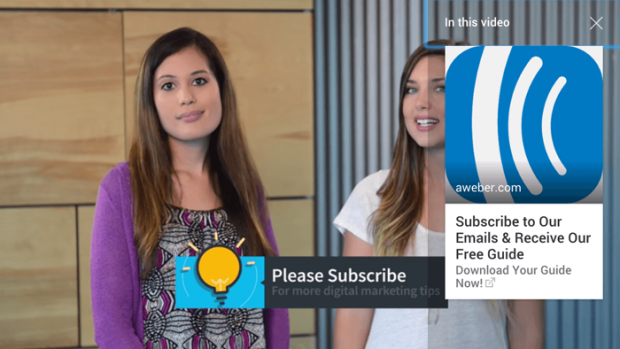
6. Stay active in the community
It isn’t enough to regularly create content, you need to actively engage your audience as well.
When a viewer takes the time to comment on your video, take the time to reply. Interact and answer any questions. Viewers are more likely to engage themselves if they know they’ll get a response.
You should also be active in niche communities, of which YouTube has many. Find the right community for your brand and subscribe to other channels. Leave comments and feedback on videos and share any that your own audience might find useful.
Promoting other channels and participating in the community underscores your brand as an active, engaged YouTuber—and your viewers will notice.
7. Advertise your YouTube channel
To reach new audiences with your content, try YouTube’s many advertising options.
Run an ad campaign with AdWords for video. Don’t fret—there’s no minimum ad budget, so you don’t have to break the bank when you run your ads.
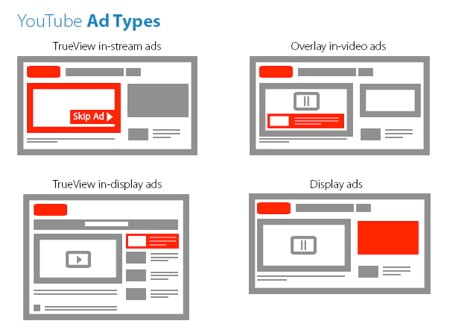
And to ensure you create an ad that really resonates with your target audience, YouTube’s Creator Academy has offered up some tips to guide you through the process:
- Keep ads short (30 to 60 seconds) and make the most of the first five seconds to keep them watching.
- Use clear calls to action (CTAs) to tell your viewers what they should do next, such as subscribe to your YouTube channel, sign up for your email list, or share your video.
- Reach new audiences with placement targeting and interest category targeting.
- Use the TrueView format to your advantage. TrueView In-display ads appear as a thumbnail and text on YouTube watch pages in the right-hand side of a viewer’s suggested and recommended videos. This format lets you pay a “cost-per-view.” You’re only charged when a user clicks through from your ad and begins watching your video on a watch page. In-display ads are a great place to promote your existing videos, but before you do, make sure they’re well-optimized.
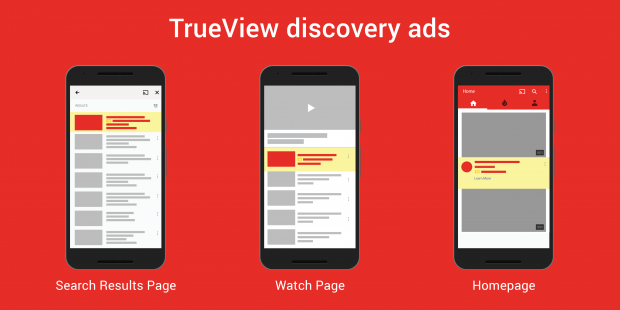
8. Promote your YouTube channel on your blog
Your YouTube promotion strategy can and should go beyond the platform itself.
Create blog content that’s relevant to your videos and embed those into your posts. You also might try including a transcription of the content to help with search.
9. Run a contest
When it comes to engaging your audience, there are few tactics that work as well as a contest. Everyone loves free stuff.
Incentivize viewers to subscribe to your channel with giveaways and prizes. Try creating a contest kickoff video with a clear call to action (enter the contest) and share it across your other social channels.
To run a successful YouTube contest you must your audience, offer prizes that will encourage them to take action, and have a contest promotion strategy. For much more on this, check out our post The Secrets to Running a Successful YouTube Contest.
10. Include a link to your YouTube channel in your email signature
While this tactic may seem overly simple, smart marketers never overlook an easy promotion opportunity.
If you include a link to your YouTube page in your email signature, every email you send has the potential to drive another visitor to your channel. And it’s a subtle way to promote your channel without shoving it down anyone’s throat.
11. Create playlists
Playlists will get your viewers consuming more of your content in one sitting. With a playlist, as soon as one video ends, another begins. If one of your videos is not in a playlist, then a viewer may have to deliberately click on another.
On your channel page, create a custom list made up of your existing videos. Alternatively, compile a playlist using videos from other relevant creators in your industry (influencers, partners, etc.). This encourages your audience to share those videos, if not the entire playlist.
Playlists can also help improve search rankings as playlist titles are another opportunity to target keywords.
12. Promote your YouTube content on other channels and social networks
Cross-promoting is the name of the game here. As a savvy marketer, you likely participate in communities across many major social networks—and those audiences should know about the great content you’re creating on YouTube.
If you use a social media management platform like Hootsuite, you can easily upload, schedule, and publish video and then share the URL across other social networks on the dashboard.
You can also use YouTube APIs to create YouTube badges for your website that display your YouTube presence and link to your YouTube channel.
13. Create Q&A videos
Run a campaign where your brand asks the audience to send in questions, then answer their queries on video. Not only does it get viewers invested and engaged, it also fosters a sense of community.
A great example of this working like a charm is a Q&A campaign that Old Spice ran several years ago.
14. Work with other brands
You don’t have to go it alone on YouTube. Consider partnering up with other brands and YouTube influencers to promote your videos. You can collaborate to create videos together, then publish the content on your respective channels and promote.
While this can be a great tactic to increase your reach and build your subscriber base, just keep a couple of points in mind as you search for brands to work with:
- Make sure your goals align. Don’t force a relationship or fit where one doesn’t exist. A partner brand or influencer should make sense for your organization and your goals should align.
- Authenticity is key. No partner content should come across as a sales pitch. Keep the messaging authentic and genuine.
15. Use calls to action
As with almost any other marketing content, it’s crucial to include a call-to-action message with your videos. Including a CTA ensures your viewers know exactly what you want them to do next when they finish watching a video or land on your profile page.
Using CTAs is particularly important when it comes to your YouTube channel promotion efforts. Whether you want viewers to subscribe, share, or like your content, be clear and concise about the action you want them to take.
16. Use annotations
You know those little call-out boxes that pop up while a video is playing? Those are annotations. And while YouTube recently announced they’ll be replacing annotations with end cards, this is still a feature you can use on desktop versions of your YouTube videos.
Using your Video Manager settings, you can create annotations and include copy that asks viewers to subscribe to your channel, join your email list, or click on the link to another video from your channel.
17. Use End cards/screens
Want to end your videos with a bang and ensure your viewers come back for more? End screens uses the last few seconds of a video to encourage users to further engage with your content or channel (depending on your goals). They often point to another video from your channel or encourage subscriptions.
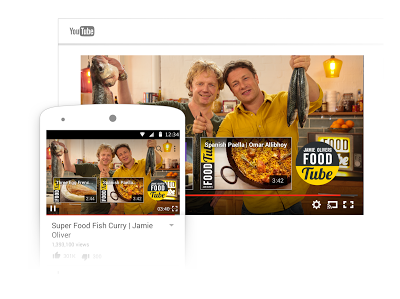
According to YouTube, this high-impact feature (which shows up on both desktop and mobile) can help accomplish the following tasks:
- Point viewers to other videos, playlists, or channels on YouTube
- Call for subscriptions to your channel
- Promote your website, merchandise, and/or crowdfunding campaigns
End screens take up the final five to 20 seconds of your video. But keep in mind that your video has to be at least 25 seconds long to have an end screen.
18. Allow video embeds
Ensure your videos have embedding enabled so your viewers can easily share your content on their websites and blogs. This is an effective way for your brand to reach new audiences.
How do you tell if embedding is enable? Just hit up your Video Manager’s advanced settings, look in your “Distribution options,” and make sure the “Allow embedding” box is checked.
YouTube is an incredibly valuable and powerful social network. With the aforementioned tactics, you can promote your YouTube channel in a way that not only helps your business, but engages and builds your social media community.
Comments
Post a Comment